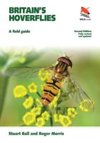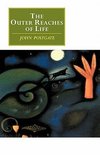
-
 Anglický jazyk
Anglický jazyk
Physiological and biochemical responses of chickpea under salinity
Autor: Dharamvir Soni
Chickpea (Cicer arietinum Linnaeus), a member of family Fabaceae, is an ancient self pollinated leguminous crop, diploid annual (2N=16 chromosomes) grown since 7000 BC, in different area of the world but its cultivation is mainly concentrated in semi-arid... Viac o knihe
Na objednávku
46.17 €
bežná cena: 51.30 €
O knihe
Chickpea (Cicer arietinum Linnaeus), a member of family Fabaceae, is an ancient self pollinated leguminous crop, diploid annual (2N=16 chromosomes) grown since 7000 BC, in different area of the world but its cultivation is mainly concentrated in semi-arid environments. It is known with different regional names like Dzelbana or Hamas (Arabic), Keker (Dutch), Bengal Gram (English), Café Franzais (Franch), Kichererbse (German), Garbanzo (Spanish), Cece, Ceci (Roman), Ovetichie harokh (Russian), Shimbra, (Ethiopia) Lablabi, (Turkey) and locally 'chana'. Commercially, the species is grouped into desi and kabuli type: desi generally have small, darker coloured seeds, whereas Kabuli is usually producing large, cream-coloured ones. Chickpea is the third most important pulse crop after common bean (Phaseolus vulgaris L.) and pea (Pisum sativum L.) in the world in terms of production and is mostly cultivated in arid and semi-arid areas such as South Asia, West Asia, North Africa, East Africa, Southern Europe, North and South America, and Australia.
- Vydavateľstvo: LAP LAMBERT Academic Publishing
- Rok vydania: 2018
- Formát: Paperback
- Rozmer: 220 x 150 mm
- Jazyk: Anglický jazyk
- ISBN: 9786139821327












